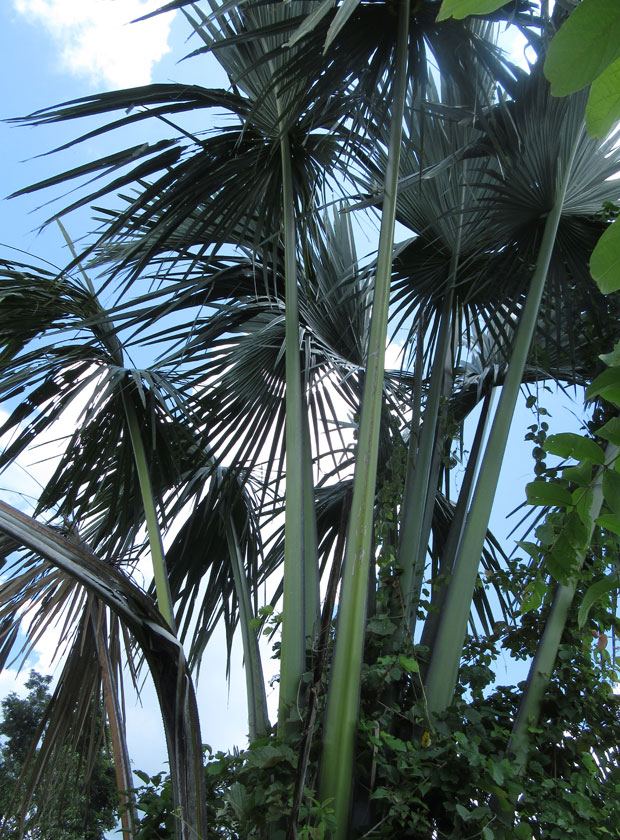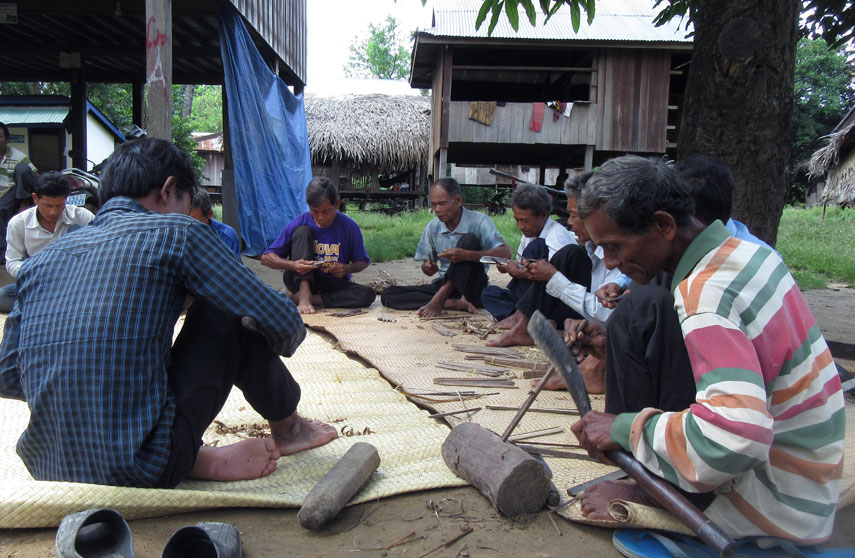-
Comment September 30, 2016
-
Kalyani Ordination Hall, Pegu
Comment September 30, 201663. Kalyani Ordination Hall, Pegu
In olden days the monks of Burma, both in Burma proper and in Mon territory belonged to different sects and held different views. The practice of Buddhism could not therefore be preserved in its pristine purity. Dhammaceti, King of Hanthawaddy sent a religious mission consisting of forty four monks to Sri Lanka in 837 Burmese Era. (1476 C.E.) with a view to purifying the religious system in Myanmar. The monks on arrival in Sri Lanka had to be re-ordained in the Sima (place for ordination) in the Kalyani river. On return of these monks to Myanmar, the King had a new Ordination Hall consecrated in Pegu with their assistance and revived Buddhism on proper lines. This new Ordination was named ‘Kalyani Ordination Hall’ after the name of the Kalyani river in Sri Lanka. The Religious Chronicle and the historical account of this Ordination Hall have been inscribed on stone slabs which have been preserved to this day.
THE ILLUSTRATED HISTORY OF BUDDHISM
by ASHIN JANAKA BHIVAMSA (Aggamahapandita)
Artist: U Ba Kyi | Link to this post -
Giving up the bad, practicing the good…
Comment September 28, 2016by Ajahn Chah
Giving up the bad, practicing the good… this is the heart of Buddhism. Sabba-pāpassa akaranam – Not committing any wrongdoing, either through body, speech or mind. That’s the right practice, the teaching of the Buddhas. Now ”our cloth” is clean.
Then we have kusalassūpasampadā – making the mind virtuous and skillful. If the mind is virtuous and skillful we don’t have to take a bus all over the countryside looking for merit. Even sitting at home we can attain to merit. But most people just go looking for merit all over the countryside without giving up their vices. When they return home it’s empty-handed they go, back to their old sour faces. There they are washing the dishes with a sour face, so intent on cleaning the dishes. This is where people don’t look, they’re far away from merit.
We may know of these things, but we don’t really know if we don’t know within our own minds. Buddhism doesn’t enter our heart. If our mind is good and virtuous it is happy. There’s a smile in our heart. But most of us can hardly find time to smile, can we? We can only manage to smile when things go our way. Most people’s happiness depends on having things go to their liking. They have to have everybody in the world say only pleasant things. Is that how you find happiness? Is it possible to have everybody in the world say only pleasant things? If that’s how it is when will you ever find happiness?
We must use Dhamma to find happiness. Whatever it may be, whether right or wrong, don’t blindly cling to it. Just notice it then lay it down. When the mind is at ease then you can smile. The minute you become averse to something the mind goes bad. Then nothing is good at all.
Sacittapariyodapanam: Having cleared away impurities the mind is free of worries… peaceful, kind and virtuous. When the mind is radiant and has given up evil, there is ease at all times. The serene and peaceful mind is the true epitome of human achievement.
When others say things to our liking, we smile. If they say things that displease us we frown. How can we ever get others to say things only to our liking every single day? Is it possible? Even your own children… have they ever said things that displease you? Have you ever upset your parents? Not only other people, but even our own minds can upset us. Sometimes the things we ourselves think of are not pleasant. What can you do? You might be walking along and suddenly kick a tree stump… Thud!… ”Ouch!”… Where’s the problem? Who kicked who anyway? Who are you going to blame? It’s your own fault. Even our own mind can be displeasing to us. If you think about it, you’ll see that this is true. Sometimes we do things that even we don’t like. All you can say is ”Damn!”, there’s no-one else to blame.
-
Shwedagon Pagoda, Yangon
Comment September 28, 201662. Shwedagon Pagoda, Yangon
Centuries ago Tapussa and Bhallika, two merchants from Ukkala brought the sacred hairs given to them by the Buddha from (the Middle Districts of) India and enshrined them at the foot of a wood-oil tree on Singuttara Hill where the sacred relics of the former three Buddhas had already been enshrined. This pagoda is called “The Shrine of the Sacred Relics of Four Buddhas”, because it contains, enshrined within it, the sacred relics of the three Buddhas (namely, Kakusandha, Konagamana and Kassapa) as well as those of Gotama Buddha. It also takes the name “Shwedagon Pagoda” after the name of the town, Tigumba or Dagon (i.e., Yangon or Rangoon).
Successive Mon Kings and Myanmar Kings vied with one another in maintaining and improving the Shwedagon which has thus been brought to its present condition and appearance. Shinsawbu, Queen Regent of Hanthawaddy gave up her throne when she grew old and set up a cantonment and palace on a pleasant piece of land to the north-west of the pagoda and resided there in constant veneration of the shrine. She died at the age of 76 in 831 Burmese Era. (1470 C.E.) bowing in reverence to the pagoda. The locality where the Queen lived in her old age is known to this day as Shinsawbu Hill.
THE ILLUSTRATED HISTORY OF BUDDHISM
by ASHIN JANAKA BHIVAMSA (Aggamahapandita)
Artist: U Ba Kyi | Link to this post -
Always remain cool and unruffled
Comment September 25, 2016 -
Do not mistake the reflection
Comment September 25, 2016 -
Calmness of spirit…
Comment September 25, 2016 -
A man of calm
Comment September 25, 2016 -
Whenever you get into a jam
Comment September 25, 2016 -
Ananda Pagoda, Pagan
Comment September 25, 201661. Ananda Pagoda, Pagan
Once upon a time, eight Arahants came to the palace of King Kyanzittha ( also known as Hti-hlaing-shin ) at Pagan and stood for alms. The King took the bowls and offered them meals. He then asked them “Where have you come from, Reverend Sirs?” The Arahants replied. “We have come from Gandamadana Mountain”. The King was very pleased and had great faith in them, and built for them a monastery for their residence during the rainy season. He also invited them to come to the palace every morning and have their meals there during the full three months of the rainy season, and fed them regularly.
One day, the King asked the Arahants to make a cave, by using their superhuman power, in the likeness of the Nandamula Cave which stands at Gandamadana Mountain in the Himalayas. The Arahants complied with his request and fashioned a cave exactly like the one there. The King built a huge cave-temple in Pagan resembling in appearance the Nandamula Cave, and called it Nanda. It is now known as Ananda Pagoda, built in 452 Burmese Era. (1192 C.E.). It is famous all over the world as the best specimen of Myanmar (Burmese) architecture.
THE ILLUSTRATED HISTORY OF BUDDHISM
by ASHIN JANAKA BHIVAMSA (Aggamahapandita)
Artist: U Ba Kyi | Link to this post












